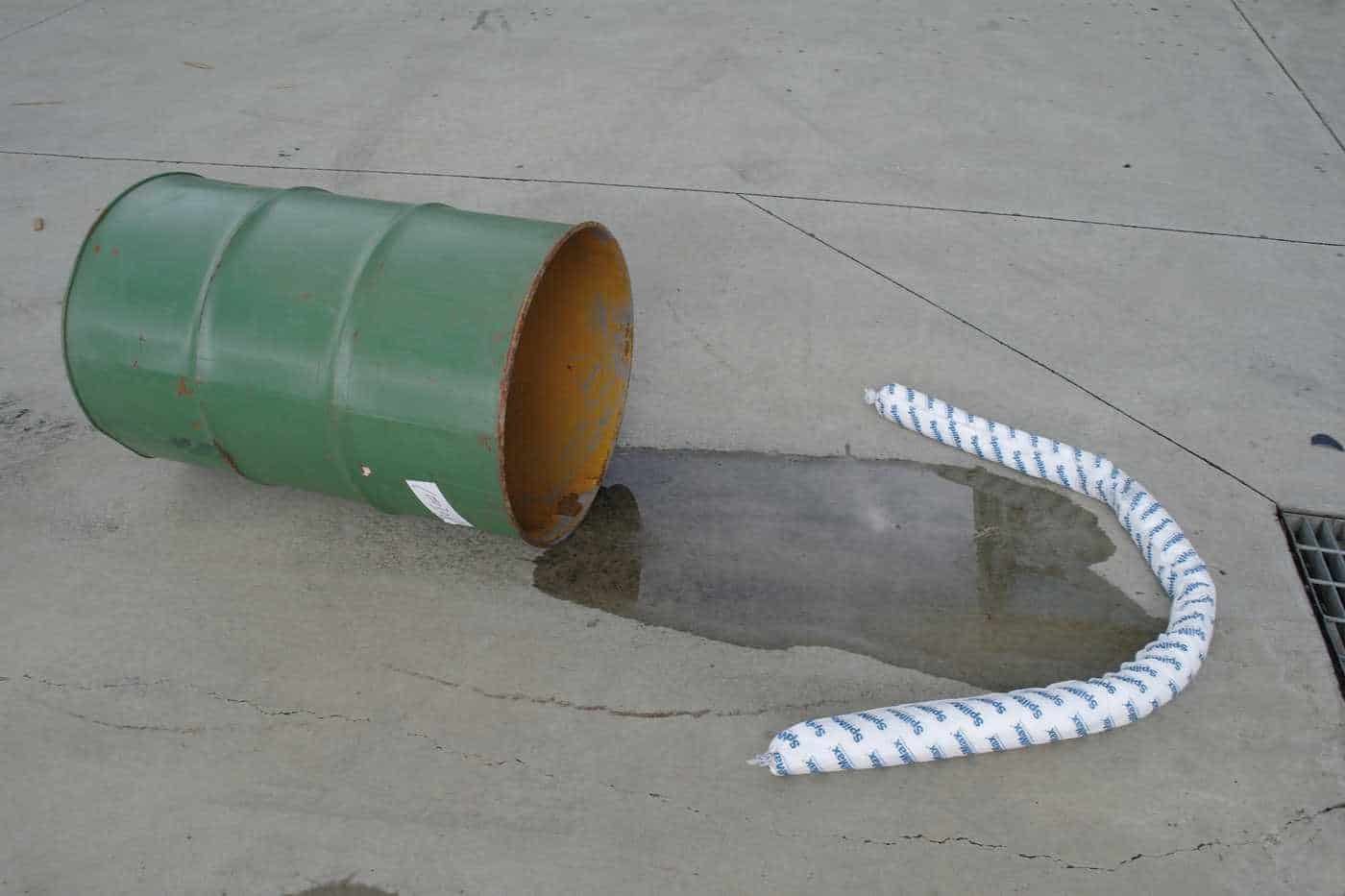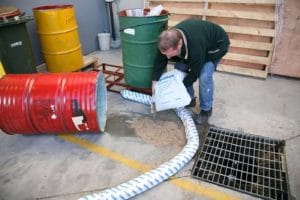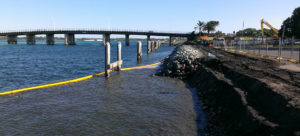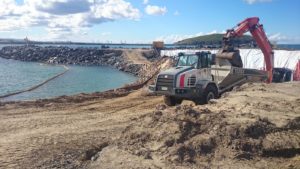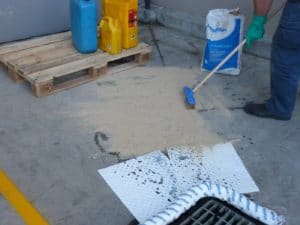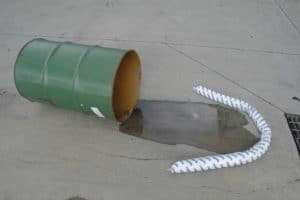What spills do I need to prepare for?
• Universal / General Purpose – designed to absorb a wider range of liquids including; oils, fuels, water, coolant, general workplace chemicals and common agricultural chemicals.
• Hazchem / Chemical – used for hazardous chemical spills such as strong oxidises, acids and caustics.
If your spill kit contains floor sweep, try to understand what type of product it is to ensure you use it appropriately. A guide to the SpilMax® range of floor sweeps is as follows:
SpilMax® Remedial is designed for use on dirt or land such as lawned areas and any location where soil has been contaminated and requires treatment on the spot. It is a bioremediation product so when added to contaminated soil, the enzymatic action of the bacteria accelerates the natural decomposition of hydrocarbons, effectively returning the altered environment to its original condition; with no disposal costs. Industries that often use this product include utilities, agricultural, golf courses and construction.
SpilMax® Premium and SpilMax® Natura-Sorb do not bioremediate. These floor sweeps have been designed for use on bitumen or concrete surfaces. When used correctly, they meet the EPA criteria for disposal at land fill.
How to respond to a spill?
In the event of a spill, there is a general process that should be followed. Of course, the nature of the spill and the scope (severity) plays a major role in its treatment. Spills of caustic chemicals or molten products require specialised treatment, but generically, the treatment of most industrial spills (oil, hydrocarbons or water based liquids) can be similar. With the correct spill kit in place, responding to a spill can be simple and effective if the policy and procedures are not only in place, but understood by all relevant staff. This is a three stage procedure:
1. Contain: Bund the leak with booms to prevent the spill from spreading further.
2. Absorb: Follow clean-up procedure using absorbent products. Use pads or pillows to absorb the spill. Then spread floor sweep over the spill and use a broom to sweep back and forth until the spill is absorbed.
3. Remediate: Use wipes to clean up the remainder of the spill, machinery and hands. Note: wipes are also effective for cleaning up small spills. Then pick up the saturated material, dispose and report according to local / state government waste management guidelines. Then most importantly, don’t forget to re-stock your spill kit.
To ensure your organisation is prepared at all times to respond to any spill incident, it is important that your spill kit remains fully stocked and is located near high risk areas such as heavy machinery, liquid storage or receive and dispatch areas. Chatoyer has resellers who offer scheduled Spill Kit Servicing programs to remove the complications of maintaining your spill kits. They will come to your workplace on a 1, 3 or 6 month basis to replenish your kits and monitor other spill response and stormwater management products. Each visit will be accompanied by a full servicing report, which can be filed and used to identify problem areas and further manage your responsibilities.

